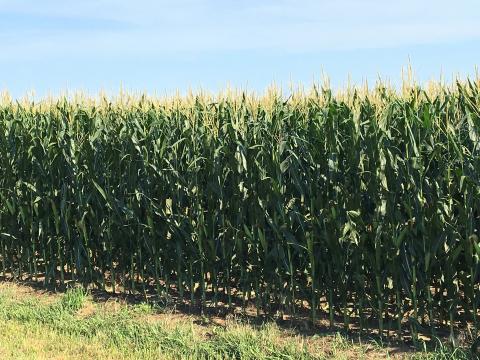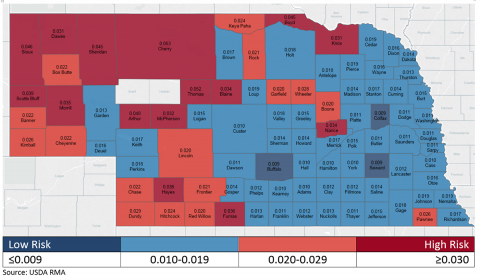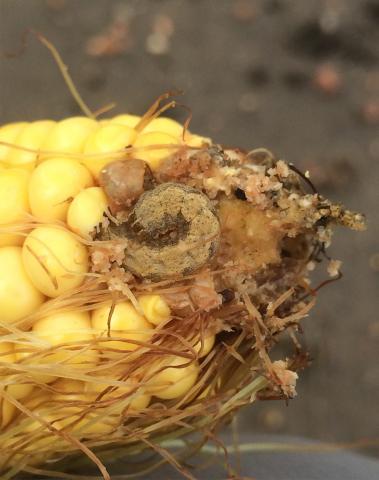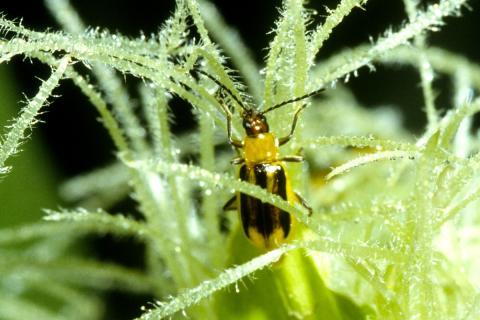Watch For Grasshoppers in Crops
August 9, 2016
Growers are reporting grasshoppers in field borders moving into crop fields in parts of Nebraska. Here are the insect treatments to help you determine treatment need.
2016 Corn Yield Forecasts as of July 27
July 28, 2016
Corn yield forecasts, based on Hybrid-Maize simulations and input from crop experts in 10 states, were developed for 41 sites across the Corn Belt on July 27. For irrigated corn, based on this conditions at this point in the season, there is only a low probability of below average yields. For rainfed corn, the majority of the sites studied, the results are more variable across locations. The article includes yield forecasts for each site, along with conditions for the period contributing to the forecasts.
Corn Disease Updates Aug. 4-5; Samples Welcomed
July 28, 2016
Corn Disease Updates, hosted by Nebraska Extension and sponsored by the Nebraska Corn Board, will be held at three more sites in the next two weeks.
2016 Corn Yield Forecasts as of July 13
July 14, 2016
Based on modeling corn growth stage and end-of-season yield for 41 sites in 10 Corn Belt states, researchers are forecasting potential end-of-season yield in "real time" to aid in decision-making thoughout the season. On July 14 they reported that corn has already reached or is approaching silking throughout most of Nebraska and the Corn Belt, except for corn in the northern and eastern states, where growth is running behind the rest of the region.based on modeling end-of-season corn yield for 41 sites. There is a low (<20%) probability of below-average yields at all irrigated locations, except for two sites in southeastern Nebraska. The range of forecast yields at the rainfed sites is wider. There is a relatively high probability (>75%) of above-average yield at two locations in the northern states and below-average yield at three locations. See story for predicted yields and probabilities for all the sites.
Nebraska Corn Production Risk by County Using Crop Insurance Data
July 13, 2016
Farmers know that yield risks vary across the state; however, the ability to compare yield risk between counties is new. Using crop insurance premium calculation data, we can quantify the expected insurance payment (or indemnities) by evaluating the county crop insurance reference rate. A high reference rate value implies higher historical payments and consequently more production risk and a higher crop insurance premium. Lower reference rates imply lower risk and lower premiums. Risk varies widely from one end of the state to the other, highlighting the need to consider general recommendations broadly and customize decisions to your data and situation. County-level risk maps for irrigated and non-irrigated corn production in Nebraska are included.
Begin Scouting for Western Bean Cutworm Eggs in Corn
July 8, 2016
The first western bean cutworm moths were captured in University of Nebraska-Lincoln black light traps June 23 at Clay Center, June 27 at North Platte, and June 30 at Scottsbluff. Flights are currently increasing, particularly in North Platte. Scouting should be underway across much of the state.
Scout for Emerging Western Corn Rootworm Beetles
July 5, 2016
Western corn rootworm beetles began emerging in southeast and south central Nebraska during the last week in June. Beetles typically emerge somewhat later in northeastern and western Nebraska. Scouting should be underway to determine field presence and possible need for treatment.
Japanese Beetles Emerging; Identification Key to Management
July 1, 2016
Japanese beetle adults are beginning to emerge in eastern Nebraska and have been reported feeding in corn and soybean. Here's how to differentiate them from the look-alike sand chafers and treatment thresholds to determine when treatment is recommended.






